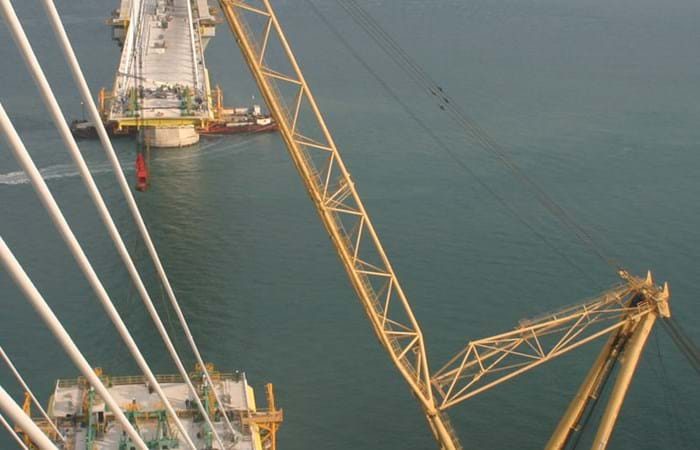The Rion Antirion bridge, a 2.3 km long cable stayed bridge, consisting of 4 pylons from which the bridge deck is suspended. SMIT was involved in two phases of the project. During the construction of the pylons, SMIT carried out the management for the tow-out and positioning. For the installation of the steel components SMIT carried out the heavy lift operations.
The heavy lift operations consist of the installation of the 12 pylon head lifts, with weights up to 197 tonnes and a required hook height of 162 meter the Taklift 7 had to be equipped with the 175 meter longboom system.
For the installation of the bridge girders up to 410 tonnes the Taklift 7 was rigged with the 130 meter longboom. Equipment: Floating Sheerlegs Taklift 7 with 130 / 175 m jib and tug Zeeleeuw.
